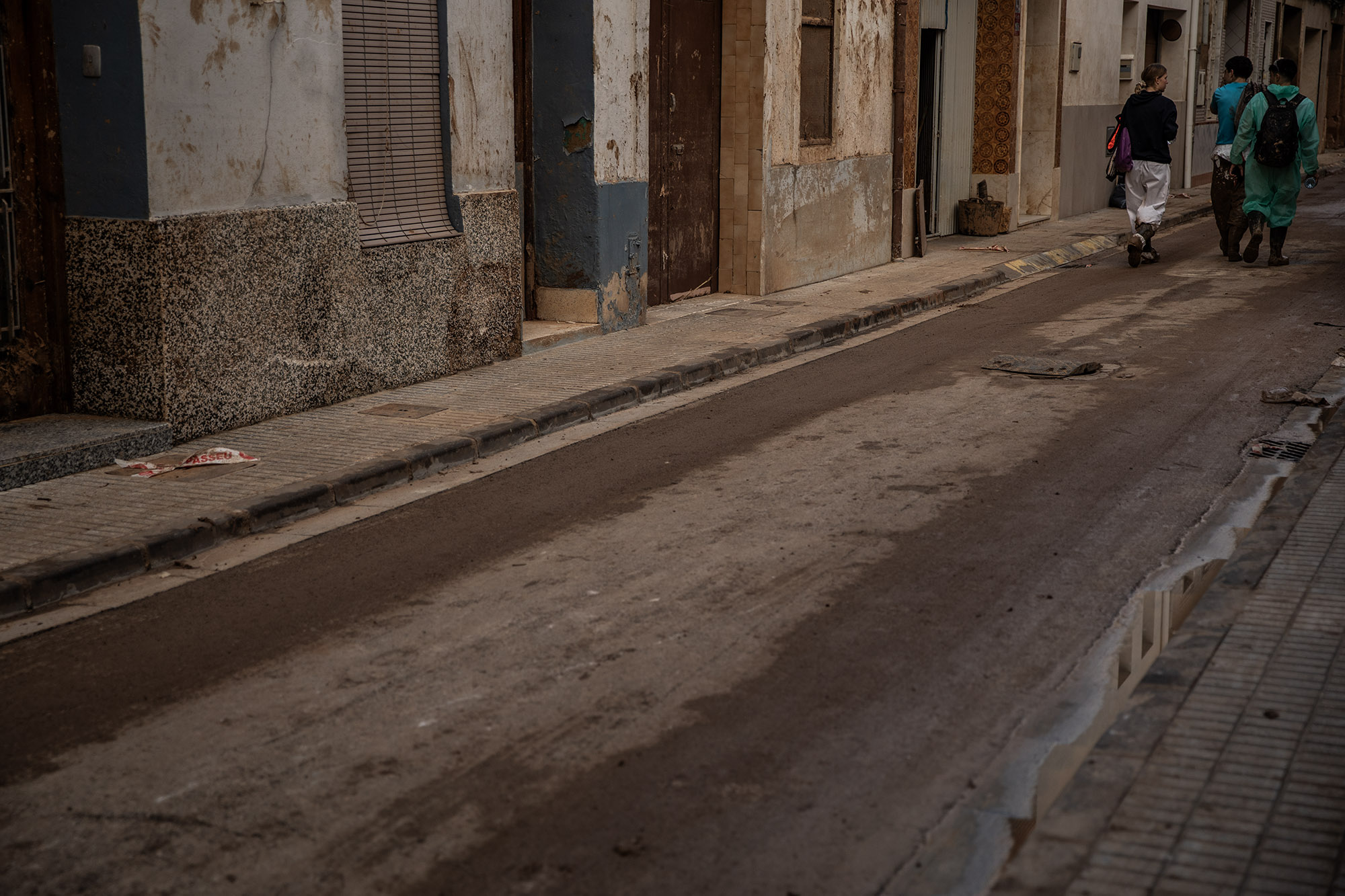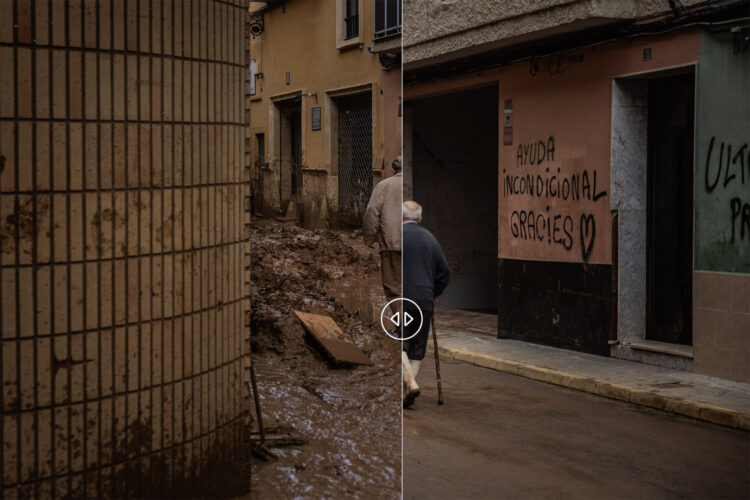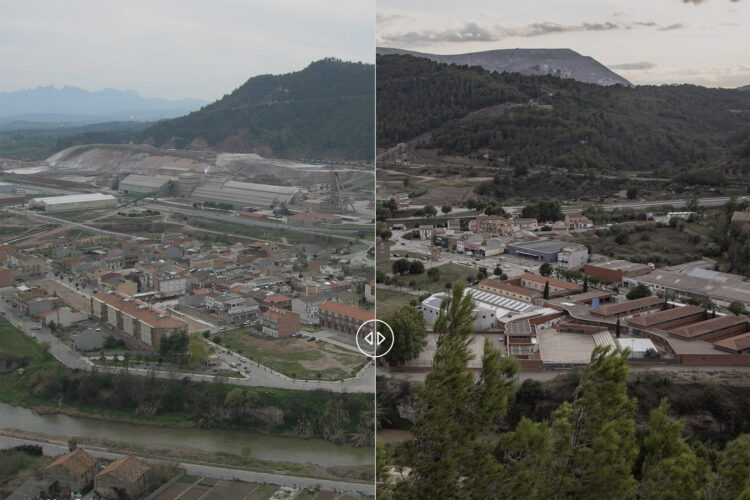November 17, 2024
This comparative shows Sant Josep Street, in the town of Paiporta, in a photograph taken on November 4, 2024 and another on November 16, 2024. In them we see the result of the work carried out by residents and hundreds of volunteers to remove the mud left from the flood that destroyed this and other towns south of the city of Valencia, in Spain, on October 29, 2024.
The first photograph was taken five days after the flood. In it we see Pablo Mendoza, a 21-year-old who studies biology in Valencia, who had been volunteering in Paiporta every day for almost a week. Pablo told Sonda Internacional while he was in Paiporta his own home in the province of Cádiz was affected by heavy rains in Andalusia. Despite the large amount of accumulated mud seen in the image, at the time this photo was taken much of the sediment, vehicles and other objects left destroyed after the flood had already been removed when the water level dropped.
In the second photograph we see the same section of Sant Josep Street after the last remains of compacted mud were removed with machinery. In the image we can see the marked houses and several volunteers walking after a day’s work. This street was blocked for twelve days with mud and debris displaced by the flood on October 29.
Context
On Tuesday, October 29, large areas of southern and eastern Spain were affected by torrential rain. The rainfall and flooding caused damage in nearly 80 municipalities, across Andalusia, Murcia and Castilla-La Mancha, but it was the region of Valencia that suffered the most devastating consequences.
As of November 16, 225 deaths had been reported in Spain (217 in Valencian Community; 7 in Castilla La Mancha; 1 in Andalusia), and 14 people were still missing, according to official data. The DANA (Isolated Depression at High Levels) caused torrential rains that in some areas exceeded, in just 24 hours, the average annual rainfall: in the town of Chiva, 600.2 liters per square meter were recorded, and in Turís the record of 771 liters per square meter was reached. A DANA like the one that devastated these towns is generated when the still warm surface air of the Mediterranean meets cold polar winds, resulting in huge rain clouds, intense downpours and flash floods. Paiporta was one of the most affected municipalities with at least 45 people killed during the floods.
Credits
Noviembre 4th, 2024: Santi Palacios for Sonda Internacional
Noviembre 16th, 2024: Santi Palacios for Sonda Internacional






